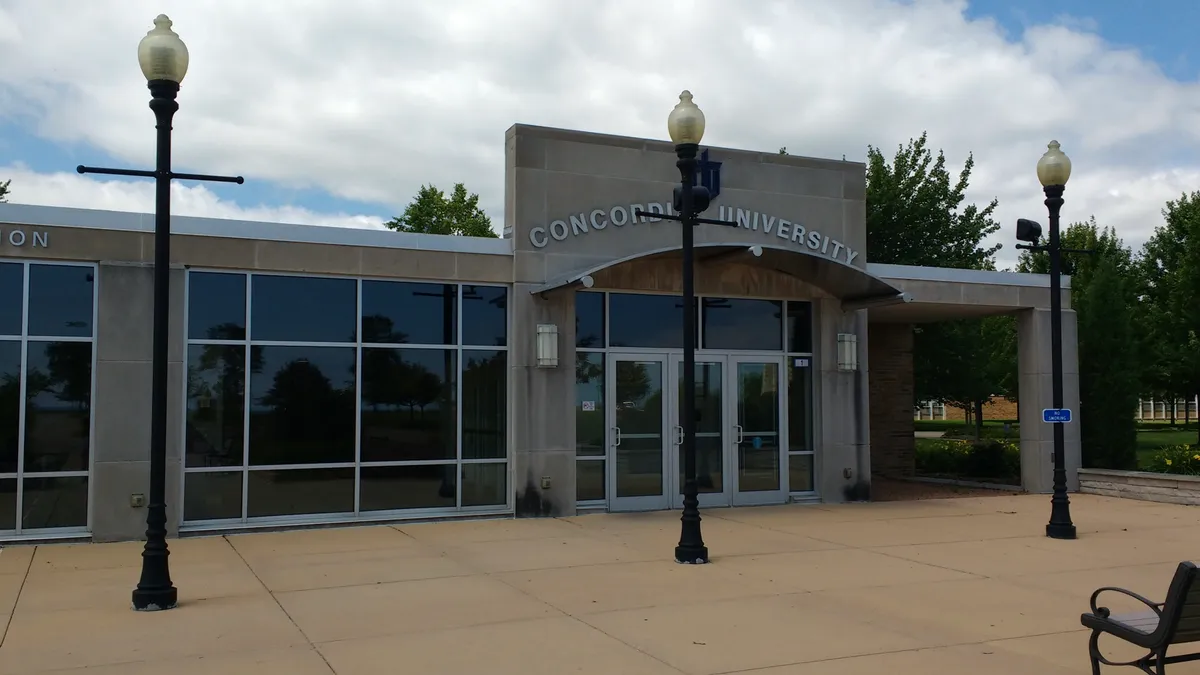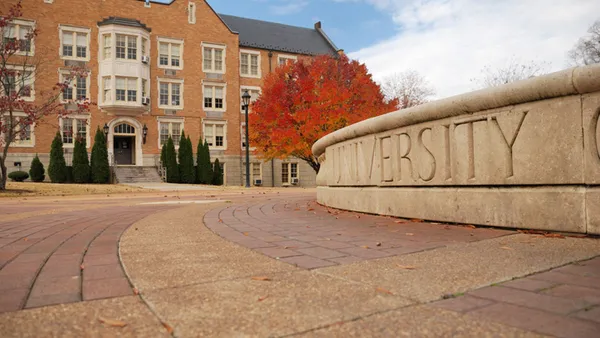Dive Brief:
- The president of Concordia University Wisconsin and Ann Arbor said the two campuses will make staffing cuts to remedy ongoing operational deficits, according to an email sent to employees.
- The Ann Arbor, Michigan, campus is in the most dire condition, university President Erik Ankerberg said Tuesday. The administration will likely lay off staff and sell property and equipment by fall to make the campus financially viable. The Wisconsin campus should also expect employee cuts, Ankerberg said, but he did not provide a timeline.
- Concordia University Wisconsin and Ann Arbor's governing board asked for a plan to address the deficits to be submitted by the end of February. Details are expected to be made public in early March.
Dive Insight:
Concordia University Wisconsin and Ann Arbor is part of the Concordia University System, a network of colleges affiliated with the Lutheran Church – Missouri Synod. The institution is a result of Concordia University Wisconsin acquiring Concordia University Ann Arbor in 2013. The two campuses share a president and governing board.
The impending cuts at Concordia University Ann Arbor are notable since the campus has managed to beat one of the biggest problems plaguing many colleges — declining enrollment.
It had just over 1,203 students in fall 2022, almost double the 667 it had a decade prior, according to federal data. And Ankerberg said the campus broke its record for overall enrollment in fall 2023, with 1,350 students.
Ankerberg acknowledged the news may be surprising but said the increase in tuition revenue couldn't sustain the campus's ballooning costs.
"Sadly, as many colleges and universities have discovered in these challenging times, growth alone is sometimes not enough," he said in his email.
The Wisconsin campus hasn’t enjoyed the same enrollment gains. It had 4,988 students in fall 2022, down 35.6% from 7,751 a decade prior.
Ankerberg, who took over as president of the two campuses at the start of 2023, did not specify how many positions could be cut or the size of the deficits. But according to public records, the institution has had budgetary shortfalls across both of its campuses from fiscal years 2017 to 2021. It generated a surplus in fiscal year 2022.
"Too many colleges and universities are content to scrape by each year, moving from crisis to crisis, existing in unending austerity,” he said. “That will not be our path."















